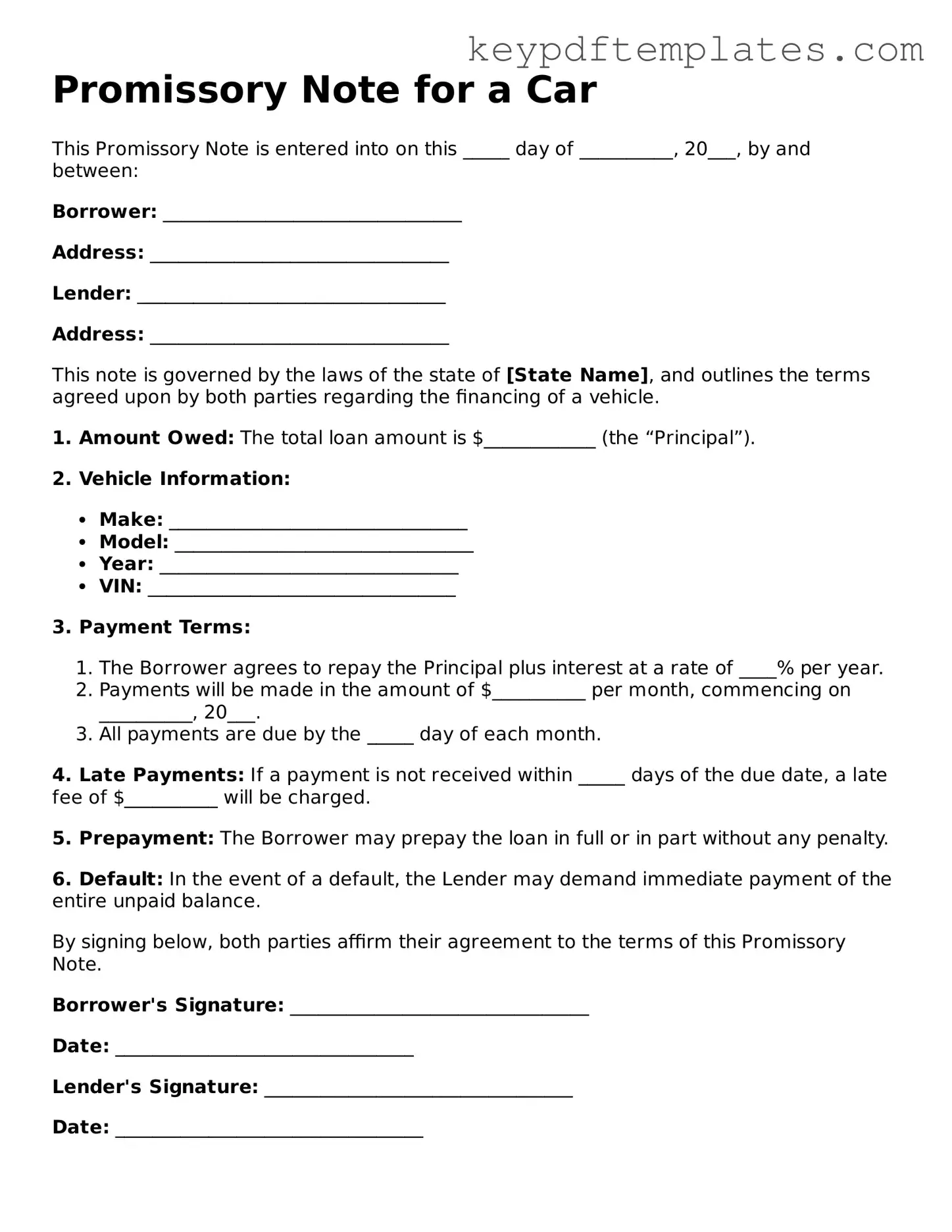Printable Promissory Note for a Car Template
A Promissory Note for a Car is a legal document that outlines a borrower's promise to repay a loan used to purchase a vehicle. This form serves as a written record of the loan terms, including the amount borrowed, interest rate, and repayment schedule. Understanding this document is crucial for both buyers and sellers to ensure a smooth transaction and protect their interests.
Modify Document Online
